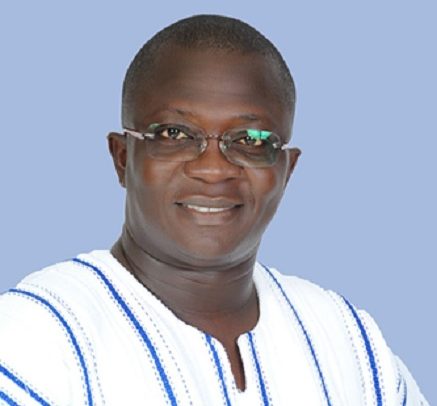
As Ghana intensifies efforts to achieve greener and more energy-efficient cities, a new breakthrough from Ghanaian architect Jude Nartey Beantey could redefine how the country designs and ventilates its buildings.
Mr. Beantey, a chartered architect and sustainability researcher currently based at Northeastern University’s Roux Institute in the United States, has developed a Biomimetic Adaptive Ventilation Skin (BAVS), a dynamic façade system inspired by the thermoregulatory behaviour of honeybee colonies.
The innovation, detailed in his research paper ‘Design and Development of a Biomimetic Adaptive Ventilation Skin Inspired by Beehive Thermoregulation for Net-Zero Energy Buildings’, applies natural principles to architecture, creating buildings that breathe, adapt, and conserve energy.
Re-imagining buildings for Ghana’s climate
Ghana’s tropical climate and rising urban temperatures have made cooling and air-conditioning one of the most significant energy expenditures in homes, offices, and schools.
The BAVS system aims to tackle this by reducing energy consumption by about 20 percent while maintaining indoor comfort through self-adjusting ventilation.
“Nature has already solved most of the challenges we face in the built environment,” Mr. Beantey said. “By studying how honeybees coordinate airflow within their hives, we can build façades that react intelligently to heat and humidity instead of relying entirely on mechanical cooling.”
The system features hexagonal façade modules, smart vents, and sensor-based algorithms that automatically open or close in response to temperature, humidity, and occupancy levels. The outcome is a façade that behaves like a living organism, responsive, self-regulating, and energy efficient.
Addressing Ghana’s energy challenge
According to the Energy Commission, buildings account for nearly half of Ghana’s total electricity demand, largely due to inefficient ventilation systems. The BAVS concept directly supports the goals outlined in the Ghana Green Building Code (GS1207:2018) and the National Energy Policy (2021), which advocate sustainable, low-energy construction practices.
Mr. Beantey’s design not only promises improved indoor air quality but also promotes local material innovation.
His proposed prototypes incorporate bamboo composites and recycled aluminum panels, affordable and climate-appropriate materials that can be fabricated locally to boost the circular economy.
“This research represents a major opportunity for Ghana to leapfrog into the era of adaptive architecture. It’s about merging high technology with local intelligence, nature, materials, and community,” he added.
From simulation to real-world application
His study utilizes Computational Fluid Dynamics (CFD) and EnergyPlus simulations to evaluate airflow and energy performance across various Ghanaian climate zones, including Accra and Tamale. Preliminary results indicate significant reductions in heat gain and improved air circulation, resulting in indoor comfort hours that exceed 90 percent compliance with the ASHRAE 55 adaptive standard.
Economic and environmental impact
Beyond energy savings, the technology could cut costs for institutions and small businesses facing high utility bills. Its modular design makes it adaptable for both new construction and retrofits, ensuring scalability across Ghana’s diverse building stock. The system could reduce the country’s reliance on imported HVAC systems, stimulate local manufacturing and green jobs, and support Ghana’s commitments under the Paris Agreement.
Global significance and recognition
The BAVS project has drawn international attention for its originality and relevance to net-zero architecture. It contributes to growing global research linking biomimicry, computational design, and sustainability in emerging economies. His paper, published in architectural research circles, positions him among a new generation of African innovators transforming the field of environmental design.
The post Innovative ‘Living Façade’ could cut building energy use by 20% appeared first on The Business & Financial Times.
Read Full Story


















Facebook
Twitter
Pinterest
Instagram
Google+
YouTube
LinkedIn
RSS